Venezia - History and Curiosity
The Wonder of piazza San Marco

  |

Piazza San Marco is the only true square in Venice (the others open areas are campi). St.Mark's Square was called "the drawing room of the world" by Musset. It has been the scene of some of the most important religious and political activities of the Serenissima as well as the center of Venetian social life for almost a millennium. At first the Square was limited to the parvis of the Basilica, because of the presence of a canal, "Rio Batario", which divided the present Square in two parts. The part of the Square now between the Procuratie, was once the vegetable garden of S.Zaccaria monastery with S.Geminiano church in the middle. The present shape of the Square was established in the XII century, for the meeting of Pope Alexander III and the Emperor Barbarossa by filling in Rio Batario and the dock. A small new Square was built with the columns of S.Marco and S.Todaro, the city's patron saints, overlooking St. Mark's Basin. The alteration of the Square was all done over the course of one century, adapting to the growing power and wealth of Venice. The present form reflects the works of many famous architects such as Sansovino, Longhena, Scamozzi, Rizzo and Tirani.
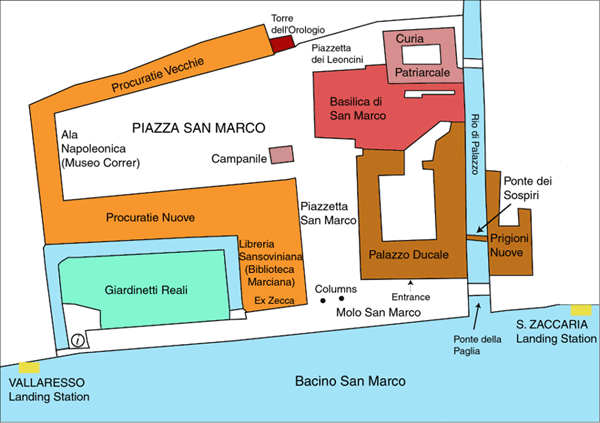
Saint Mark's Basilica
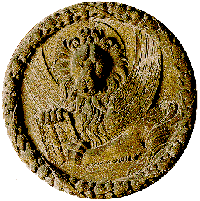
The first patron saint of Venice was St.Teodoro. In 828 St.Mark the Evangelist substituted him when two merchants smuggled his mortal remains back from Alessandria (Egypt). St.Mark's remains were initially buried in a chapel in the Doge's Palace but later a church was built that was to be his perpetual resting place. The church later suffered damage from fire and was modified many times to adapt to Venice's evolution of power and wealth. This simple church evolved into St.Mark's Basilica. The modifications to the Basilica continued on through an entire century, therefore the results of the construction exhibit a mixture of different styles.
In order to justify the theft of St.Mark's body, legend states that when the Evangelist went to the lagoon, an angel came and said: "Pax tibi Marce, Evangelista meus" (Translation from Latin : peace to you, Mark my Evangelist), showing in this way that God had determined Venice as the final resting place of the Saint. The Venetians acted to fulfill the divine profecy.
St.Mark's Basilica is also well known for the Pala d'Oro, one of the richest and most precious altar screens in the world. It is covered with more than 3000 precious stones and enamel ikons inlaid in gold.
The Four Horses of San Marco
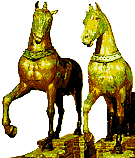
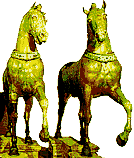
The origin of the four horses is not well known, but it is believed that they came from Costantinople. Their heads were separated from the bodies to make the transportation easier. After arriving in Venice, the cuts between neck and head were hidden by collars. They were cast in almost pure copper, harder to melt but easier to gild.
In 1797 after Napoleon Bonaparte declared the official end of the Venetian Republic he sold the Venetian territories to Vienna but before leaving the city the French looted all that they could carry including the four horses. They were returned by the French Government only after 1815.
The Palazzo Ducale

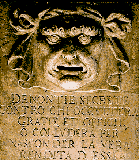
The Palazzo Ducale (Doge's Palace) got its present form after radical changing during the 14th and 16th century. It was the Doge's residence and at the same time seat of many different political and social institutions. The first floor was occupied by minor institutions, such as the Avogaria or lawyers offices, where law cases were examined; the Chancellery; the Censors and Provveditori della Milizia del Mar (Naval Offices) which oversaw the care and equipping of ships.
The Grand Council chamber, the largest room of the palace, the Ballot chamber, where the committee met to elect the Doge, and the Doge's apartments are located on the second floor.
The Sala del Collegio, where foreign ambassadors were received, and rooms used by the state security service like the Council of Ten are located on the third floor. The Bussola chamber is a small room with a box where citizens could submit written complaints against other citizens. The Sala dei Tre Capi (Three Chiefs Room) was used by three components of the Council of Ten, who kept that place only for one month. The State Inquisitor Room was used to interrogate prisoners.
The Procuratie
The New and Old Procuratie, boardering the Square, was the offices of the 9 Procurators, the most important citizens of Venice after the Doge. They were controlling the Square, the Basilica and the 6 sections of the city, called sestieri . In 1585 the Venetian ambassador to Instambul told the Senate that the Turkish were drinking a hot black drink, made by a seed called Kahavи and that people had diffuculty in falling asleep after drinking this beverage. This seed was brought back to Venice and in 1638 it was roasted, ground and sold at an expensive price from a special caffи shop which was located directly under the Procuratie. In a short time the caffи shops opened all of the city and by the end of the next century there were 24 such caffи's in St.Mark's Square alone. These caffи's soon became the favorite place among intellectuals to meet and drink coffee. Gambling, another favorite past time of the Venetian nobility also went on in the caffи's.
The popularity of these places grew more and more, and in 1720 one of the most elegant: "Caffи alla Venezia trionfante" opened it's doors. This Caffи of the Triumphant Venice was a popular meeting point for both foreign and national high society. Such notables as Carlo Goldoni, the brothers Gozzi and Antonio Canova often spent many hours in this caffи. The caffи's first owner was Floriano Francesconi and therefore the caffи was affectionately called "Florian". In 1775 G. Quadri decided to open a new caffи shop in front of the Florian on the opposite side of the Square and promised to serve only real Turkish Cafй. For a long time the shop had a bad reputation, driving the owner to near bankruptcy, but in 1830 the nobility recognized the Caffи Quadri as having fine service and quality coffee and it's reputation for quality remains today.

The Venetians were also well known for their love of beautiful women and love affairs were frequent and legendary. Giacomo Casanova became one of the most legendary lovers of Venetian origin but other lesser known lovers soon filled the State orphanages with their children. Many of these love affairs had their start in the caffes of St.Mark's Square so in 1767 the government prohibited women from frequenting caffes. However, Casanova couldn't resist the charms of the women who strolled about the Square and under the porticos of the Procuratie. He was placed in "Piombi", the prison, by State Investigators because of his lascivious and anti-religious habits. Casanova attempted to escape twice. The first time, just before finishing a hole in the floor he was moved to another cell. However it was better that he didn't finish digging as that hole would have dropped him directly in front of the Inquisitors (again!) in the room below. The second attempt succeeded and he made his way out of the Palace and walked directly down the Golden Staircase and out the main entrance! The warders saw him leaving but they thought he was a politician and didn't stop him. Before taking the Gondola to leave the city, he couldn't resist one last stroll through the Procuratie where he bid his friends goodbye and had one last cup of coffee in his beloved Piazza San Marco. Casanova reached Paris where lived for 20 years before he was pardoned and allowed to return to his beloved Venice.

The Bell Tower
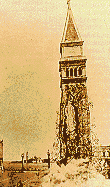
"El paron de casa" (the lord of the house): so Venetians called the bell tower of St.Mark. On July 14, 1902 it collapsed, luckily without causing any casualties, not even a pigeon was hurt. It didn't do any damage to the Basilica either even though it stands just a few feet from its entrance.
Inside the bell tower there are 5 large cast iron bells. Each bell has a name and a purpose; Marangona rang mornings and evenings at the beginning and end of the work day, Maleficio rang for capital executions, Nona rang at the 9th hour, Trottiera called magistrates to meetings in the Palazzo Ducale, and the bell of Pregadi called senators to the Palace.
The Clock Tower

The clock shows the hours in Roman numerals, the phases of the moon and the Zodiac. It also gives indications to sailors about the tides and which months are more favorable for sailing. The Serenissima gave a large reward to the Ranieri brothers who constructed the clock tower, but legend has it that later their eyes were removed in order to keep them from repeating such a wonder.
The Bridge of Sighs

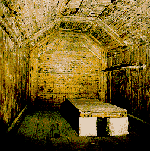
The Bridge of Sighs received its name in the 17th century, because the prisoners who passed through it on their way to the prison cells on the other side would most likely see the beautiful sight of the lagoon and the island of S.Giorgio and freedom for the last time.
The Institutions
Thoughout Europe the Serenissima's government was considered a model of stability, honesty and demonstrated the possibility of combining the monarchy, aristocracy and democracy, in the figures of the Doge, the Senate and the Grand Council.
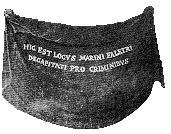
The Doge represented the unity of the Republic. He was elected for life by the Grand Council, chosen from among the greatest Venetian families and in general was older than 70. The Doge's powers were very limited. He could not make any decisions in the absence of the six Councillors of the six sestieri of the city of Venice. He could not leave Venice unless he was accompanied by at least two Councillors. The actions of the Doge were controlled by the Seignory, which consisted of the six Councillors, the three heads of the supreme tribunal and the Doge himself. Moreover the Doge had to pay for all official festivities organized in the Doge's Palace, for any restoration work done in the Palace and often had to pay for military operations, without getting money from the State. In fact it was not for a desire for money or power that made Venetians desire to be Doge, but for the honor of covering the highest position of the Republic and all the noble families wished for the the privilege of having a Doge in their family as this insured that their name would be remembered through out history. Also some commoners made extraordinary services to the State or payed substantial sums to the government or to impoverished nobles to buy titles of nobiltry and to have their name written in the Golden Book so that they could be members of the Grand Council and in this way hope for a nomination as Doge. There is one dark spot in the history of the Doges of the Serenissima. After the election of Doge Marin Falier, he tried to lead a popular conspirancy and was executed by order of the Council of Ten. The Council of Ten in fact were responsible for decisions about crimes against the State and about decisions requiring absolute secrecy. They also prevented the ambitions of influential citizens from threatening the Venetian Republic. In the Ballot Chamber of the Doge's Palace, where the portraits of the Doges are exhibited, the portrait of Marin Falier is replaced by a black veil in remembrance of his crime.
In Venice no single institution monopolized power becouse no single decision making body could operate unchecked by another and the quick rotation of all offices made it difficult for a single individual or faction to appropriate power or to be corrupted becouse their time in office is not long enough to be useful for such a pourpose.
Frauds in casting ballots have been known to happen in Venice, before ballots were cast, Grand Council members milled about in front of the palace, on the "broglio", where the most powerful tried to buy the votes of impoverished nobles, called the barnabotti. It is from this practice that the the word broglio (entanglement) came in to use and is still used today.
The Carnival

When Carnival first began it was celebrated from December 26 and reached its climax the day before Ash Wednesday, also known as "Mardi Gras". During the period of Carnival it seems that every excess was permitted and the fact that everyone wore masks seemed to abolish all social division. All the campi were thronged with people intent on partying and carousing, singing, dancing and playing games. The most common costume (the baщtta) was composed of a black silk hood, a lace cape, a voluminous cloak (the tabarro), and a three-cornered hat and a white mask that completely covered the wearer's face. This allowed revelers to go around the city incognito. It was useful to go to casini, places where you could play games of chance.
Since 1980 the celebration of Carnival in Venice has gained popularity. People come from the world over to attend private and public masked balls and masked revelers of all ages invade the campi where music and dancing continues nearly day and night. Theatrical performances and an array of ancient games are organized for the amusement of Venetians and visitors alike.
What a strange name for a place!
The streets in Venice generally have ancient and above all courious names which reflect different work that was done in the area (like Calle del "Pestrin", which means milkman, of "Pistor", which means baker, of "Fruttarol", which means fruit seller, etc.), commercial activities (like "Mercerie", where you could buy fabrics, "Frezzerie", where they made arrows, Calle "Fiubera" where they made buckles for shoes, etc.) and the origins of inhabitants (like Calle dei "Preti", the street of priests, or "Muneghe", meaning nuns, or "Ragusei", which refers to the people from Ragusa, Dubrovnik nowadays, who lived in that area of Venice, riva dei "Schiavoni", the "big slaves", refers to slaves brought from the Dalmatan Coast, etc.).
There are also many stories about places names. The Riva di Biasio comes from Biagio who was thought to be the owner of a little XVI century restaurant (an "osteria"). Biasio was well-known by all the sailors as a good cook, especially for his delicious meat dishes. However Biasio became infamous when a customer found a baby's finger in his plate. Another story about Biasio reports him to be a butcher who sold human instead of animal meat. However the story about his death is very clear. He was condemned to death by the Serenissima Republic, tortured on a boat crossing the width of the Grand Canal. Then, as a warning to all Venetians, he was tied between the two columns of the Piazzetta and publicly beheaded. Biasio was then cut into four parts hung on four hooks on the four cardinal points of Venice so that everyone could see him and remember his crime.
On a lighter note, Campiello Mosca (meaning fly) has its origin not in relation to the annoying insects, but in reference to the false beauty spots, called mosche. These beauty spots were worn by both men and women and were very important during the period of the Serenissima as they were used as silent and secret messages depending where they were placed on the wearers face, following a precise code. A woman who wore a beauty spot near an eye would mean: "I'm irresistible".